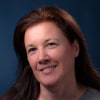Economic recovery from the coronavirus pandemic may come faster than initially anticipated, the Federal Reserve said Wednesday after the conclusion of its monetary policymaking meeting.
The Federal Market Open Committee voted to keep its benchmark interest rate unchanged, at a range of 0 to 0.25 percentage points, a level it expects to maintain until at least 2023 in order to help the economy add jobs for as long as possible.
The Fed projects unemployment will fall to 7.6 percent by the end of this year and to just 4 percent by 2023. Pre-pandemic, the jobless rate was at a 50-year low of 3.5 percent.
However, there are still areas of the economy that will really struggle “until we get a vaccine that is in wide use and closely trusted,” Federal Reserve Chairman Jerome Powell said in a press conference Wednesday afternoon.
Powell stressed the importance of wearing a mask while in public, saying, “All of us have a role to play in our nation’s response to the pandemic, following the advice of the public health professionals, to keep appropriate social distances and to wear masks in public, will help get the economy back to full strength.”
“We’re learning to live with Covid, which still spreads,” Powell said. Even without a vaccine, “we’re learning to engage in economic activity. People are still at risk of catching it, but we’re still able to resume economic activities.”
The central bank repeated its message that the path of the economy continues to depend “significantly” on the course of the coronavirus, and said “the ongoing public health crisis will continue to weigh on economic activity, employment, and inflation,” according to a statement.
Fiscal support has “made a critical difference,” Powell said, all but urging Congress to provide more aid to help fast track the recovery. Retail sales data released Wednesday morning by the Commerce Department revealed that Americans have already pulled back on their spending since the $600 in additional unemployment benefits expired at the end of July. Retail sales were expected to increase by 1.1 percent in August, but only rose by 0.6 percent. Consumer spending drives around two-thirds of the U.S. economy and is key to its recovery.
In order for the U.S. economy to reach its highest potential output, “we need prosperity to be broadly spread,” Powell said.
“We will not lose sight of the millions of Americans who are out of work,” Powell added, pointing once again to the fact that the economic downturn “has not fallen equally on all Americans” and that the burden has fallen harder on “lower wage workers in the service sector,” particularly women and Hispanics.
The central bank also revised its full-year GDP decline, to down 3.7 percent from down 6.5 percent in June, which was a “pleasant surprise,” said Ryan Detrick, chief market strategist for LPL Financial. “This helped confirm economic activity in the third-quarter has greatly surprised to the upside.”
“The likely half is that the expansion will continue,” Powell said during the press briefing. “It’s well along, and it will move most easily through the parts of the economy that weren’t directly affected.”
However, overall economic activity remains “well below” pre-pandemic levels, and the outlook for the economy is “extraordinarily uncertain,” Powell said.











